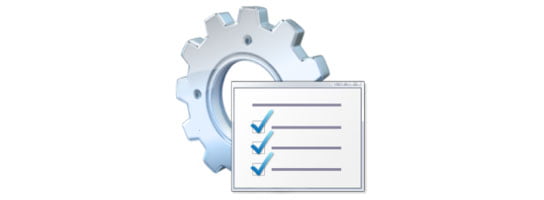
Hard disks usually seem as dependable as the transition from night to day. Unfortunately, hard disks can and do fail… often within a fairly predictable period of time. Today we look at how to check your HDD for signs of failure using this easy guide to hard drive diagnostics.
Chkdsk utility
The chkdsk Windows utility has been around forever and is still used for checking HDDs. It is used for repairing problems related to bad sectors, cross-linked files, lost clusters and directory errors. To access this hard drive diagnostic tool:
Go to Start/Computer and right click on the drive you want to scan. Click Properties, go to the Tools tab and click Check Now.
S.M.A.R.T. scans
Most modern hard drives are equipped with S.M.A.R.T. – Self-Monitoring and Reporting Technology. This hard drive diagnostic tool looks for evidence of impending mechanical failure, and can also tell you if a recent bump or power failure has created any potentially harmful hard drive errors.
There are lots of free S.M.A.R.T. utilities available on the Internet. One of them is PassMark’s DiskCheckup™ tool.
Hard drive utilities from the manufacturer
The manufacturer of your hard drive will also have their own proprietary tools for doing hard drive diagnostics. You can find the tools on the manufacturer’s website – they will help you diagnose problems with the disk surface and generally check the HDD.
Here are the hard drive diagnostic utilities available from some popular hard drive manufacturers:
- Seagate
- WD
- Samsung
Diagnostic software
There are also freeware utilities available on the web that will let you know when your hard drive is about to fail. Use third-party software for hard drive diagnostics if:
- You have already run chkdsk, and are still experiencing serious problems that make you suspect disk surface errors or imminent hard drive failure;
- You don’t know the manufacturer of your hard drive and aren’t confident of taking apart your computer to find out;
- You’ve already backed up your hard drive! If you suspect an upcoming hard drive crash or a bad disk surface error, back up your data immediately – don’t fiddle round with installing hard drive diagnostic software until you’ve done this important step.
And if you are going to speed up you HDD, you can use Auslogics Boost Speed. It is an effective, quite safe and easy-to-use software.
In fact, if you are aware enough of potential computer problems to run hard drive diagnostic software, you’ve already won half the battle. Back up your data and replace your hard disk – hard drives are incredibly cheap nowadays. Buying a new drive is much cheaper than trying to recover data from a failed one.





 Done! Great to see you among our subscribers!
Done! Great to see you among our subscribers!
Hard disks usually seem as dependable as the transition from night to day. Unfortunately, hard disks can and do fail… often within a fairly predictable period of time. Today we look at how to check your HDD for signs of failure using this easy guide to hard drive diagnostics.
Could you please kindly assist and send further information in regard to software diagnosing and repairing
Your assistance would be greatly appreciated
Kind regard
please send me a software of hard disk manager.
thanks
Danke schon.